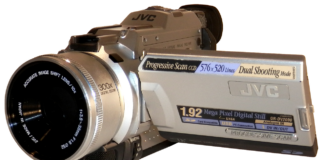As content creators increasingly focus on enhancing the overall quality of their videos, the importance of audio cannot be overstated. The DJI Osmo Action 4 is a fantastic camera that excels in video recording; however, its built-in microphone may not always deliver the audio clarity you desire. This guide explores the top external microphones that can significantly improve your audio experience while using the DJI Osmo Action 4.
Using an external microphone with your DJI Osmo Action 4 can dramatically enhance the audio quality of your recordings. By capturing clearer sound and minimizing background noise, external mics help create a more professional and engaging viewing experience. Whether you’re vlogging, conducting interviews, or filming action shots, an external mic is a valuable tool for any videographer.
- Compatibility: Ensure the microphone is compatible with the DJI Osmo Action 4.
- Sound Quality: Look for mics that offer high-fidelity audio capture.
- Directional Capabilities: Consider mics with directional pickup patterns to focus on specific sounds.
- Portability: Choose lightweight and compact options for easy transport.
Lavalier microphones, often referred to as lapel mics, are ideal for interviews and vlogging due to their discreet design. They provide excellent audio quality, especially in noisy environments.
The Rode SmartLav+ is a favorite among content creators, known for its high-quality audio capture and seamless compatibility with mobile devices. Its compact design makes it perfect for on-the-go recording.
The BOYA BY-M1 is an affordable yet effective option that delivers impressive sound quality. This microphone is popular among beginners and experienced videographers alike, making it a versatile choice for various recording scenarios.
Shotgun microphones are excellent for capturing focused audio from a distance, making them ideal for outdoor shoots and dynamic environments.
The Rode VideoMic Pro+ features advanced audio processing and a supercardioid pickup pattern, ensuring clear sound capture while minimizing ambient noise. This mic is perfect for action shots where clarity is essential.
The Deity V-Mic D3 Pro is known for its versatility and superior audio quality. It offers adjustable gain and a rechargeable battery, making it a reliable choice for extended recording sessions.
USB microphones provide excellent audio quality and are user-friendly, making them suitable for live streaming and podcasting alongside your video projects.
The Blue Yeti is a versatile USB microphone featuring multiple pickup patterns, making it a favorite for podcasters and live streamers seeking high-quality audio.
The Audio-Technica AT2020USB+ combines studio-quality sound with USB convenience, making it an excellent choice for those looking to enhance their audio during video production.
Connecting an external microphone to your DJI Osmo Action 4 is straightforward. You’ll need the appropriate adapters to ensure optimal audio performance. Typically, a 3.5mm TRS to TRRS adapter is required for seamless connection.
To achieve the best audio quality, consider the following tips:
- Mic Placement: Position the microphone close to the sound source for clearer audio.
- Windshields: Use windshields when recording outdoors to minimize wind noise.
- Gain Settings: Adjust gain settings appropriately to avoid distortion and background noise.
To maximize your recording quality, avoid common pitfalls such as improper mic placement, neglecting wind noise reduction, and overlooking audio levels. Awareness of these issues can significantly enhance your recordings.
Proper maintenance of your external microphone is crucial for longevity and consistent audio performance. Regular cleaning and careful storage will ensure your microphone remains in top condition for all your recording needs.

Why Use an External Mic with DJI Osmo Action 4?
When it comes to capturing high-quality video content, audio quality is just as crucial as the visuals. The DJI Osmo Action 4, known for its stunning video capabilities, can significantly benefit from the addition of an external microphone. This article delves into the reasons why utilizing an external mic is essential for enhancing your audio experience.
Using an external microphone can dramatically enhance audio quality in your recordings. Unlike the built-in mic, which may pick up unwanted background noise, an external microphone is designed to capture clearer sound. This leads to a more professional and engaging viewing experience for your audience.
- Clearer Sound Capture: External mics are engineered to focus on the sound source, resulting in crisper audio that stands out against ambient noise.
- Reduced Background Noise: Many external microphones feature directional capabilities, allowing them to isolate the primary sound source while minimizing surrounding sounds.
- Versatility: External mics come in various forms, including lavalier, shotgun, and USB mics, each tailored for different recording scenarios, from interviews to dynamic outdoor shoots.
Furthermore, using an external mic can improve the overall production value of your videos. Viewers are more likely to stay engaged with content that has high-quality audio, as poor sound can be distracting and lead to a negative experience. Whether you are vlogging, conducting interviews, or creating tutorials, investing in an external microphone is a step towards achieving professional-grade results.
Another advantage of external microphones is their portability. Many models are lightweight and easy to carry, making them ideal for creators who are constantly on the move. This convenience allows you to capture high-quality audio wherever you go, ensuring that you never miss a moment.
In addition to enhancing audio quality, external microphones can also provide features such as adjustable gain settings and windshields, which are particularly beneficial for outdoor recordings. These features help to further refine the audio capture, making your content not only clear but also environmentally appropriate.
In summary, the addition of an external microphone to your DJI Osmo Action 4 setup is a game-changer for audio quality. By capturing clearer sound, reducing background noise, and offering versatile recording options, external mics elevate your video content, making it more professional and appealing to viewers. Investing in a quality external microphone is a decision that will enhance your overall recording experience and ensure your audience enjoys the best possible sound.
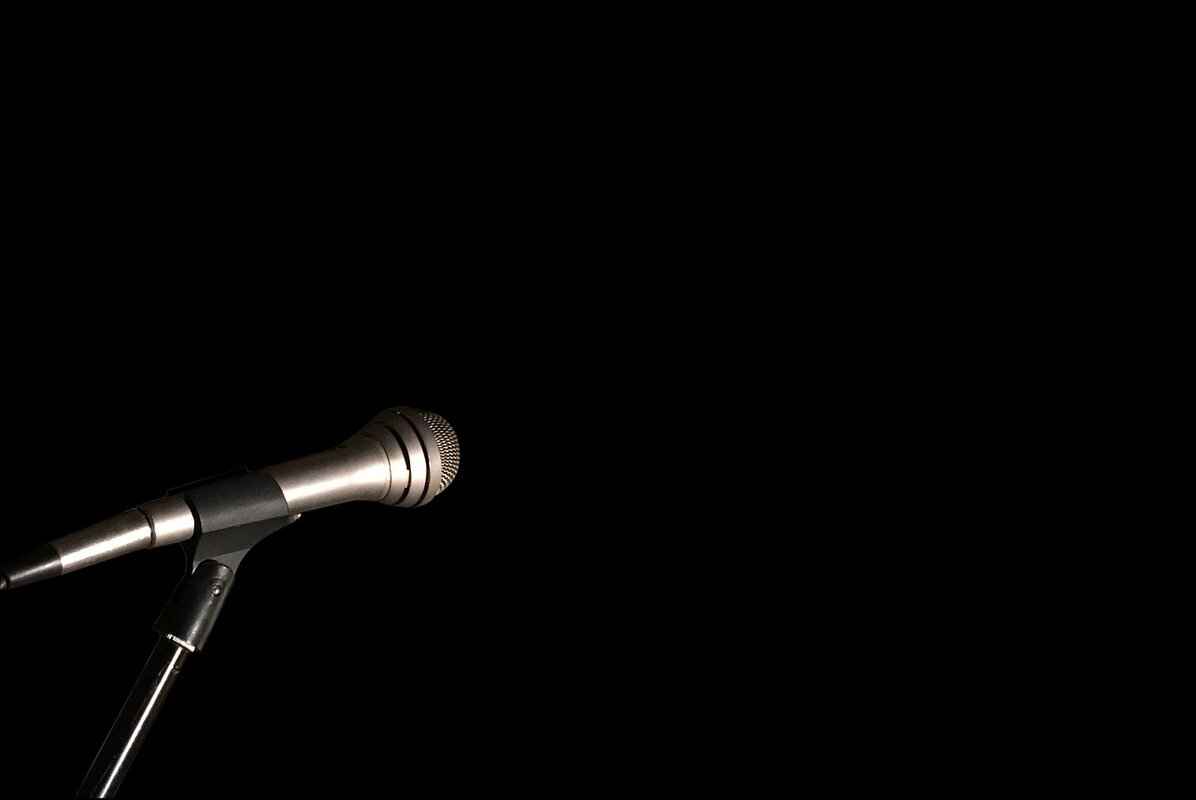
Top Features to Look for in an External Mic
When it comes to enhancing your audio quality for video production, selecting the right external microphone is crucial. With a plethora of options available, understanding the key features that make a microphone suitable for your specific needs is essential. Below, we explore the top features to consider when choosing an external mic for your recording setup.
Compatibility refers to how well a microphone can connect with your recording device, such as the DJI Osmo Action 4. It’s vital to ensure that the microphone you choose can seamlessly interface with your camera. Check for input types (like 3.5mm or USB) and whether you need any adapters to achieve a proper connection.
Sound quality is arguably the most critical feature to consider. Look for microphones that provide clear, crisp audio without distortion. Features such as frequency response range and sensitivity ratings can help you gauge the audio fidelity. A microphone that captures a wide frequency range will deliver richer sound, making your recordings more professional.
Directional capabilities refer to how well a microphone can pick up sound from specific directions. Cardioid and supercardioid microphones are designed to capture sound from the front while minimizing noise from the sides and rear. This is especially useful in noisy environments where background sounds can interfere with your recordings.
If you plan to record on the go, portability becomes a significant factor. Look for lightweight and compact microphones that are easy to carry. Some models come with protective cases or clips for easy attachment to your gear, making them ideal for travel and outdoor shoots.
Many external microphones come with additional features that can enhance your recording experience. Features like built-in windshields, adjustable gain settings, and battery life can significantly impact your audio quality. For instance, a microphone with a built-in windshield can help reduce wind noise during outdoor recordings, ensuring clearer audio capture.
Durability is another essential feature, especially if you plan to use your microphone in various environments. Look for microphones made from high-quality materials that can withstand the rigors of travel and outdoor use. Some models also offer weather-resistant designs, making them suitable for different conditions.
Finally, while it’s tempting to go for the cheapest option, investing in a quality microphone can yield better results in the long run. Establish a budget that allows you to choose a microphone that meets your needs without compromising on quality. Remember, a good microphone is an investment in your content creation.
By considering these key features—compatibility, sound quality, directional capabilities, portability, additional features, durability, and budget—you can make an informed decision when selecting an external microphone. This ensures that your recordings will not only sound better but also resonate more with your audience.
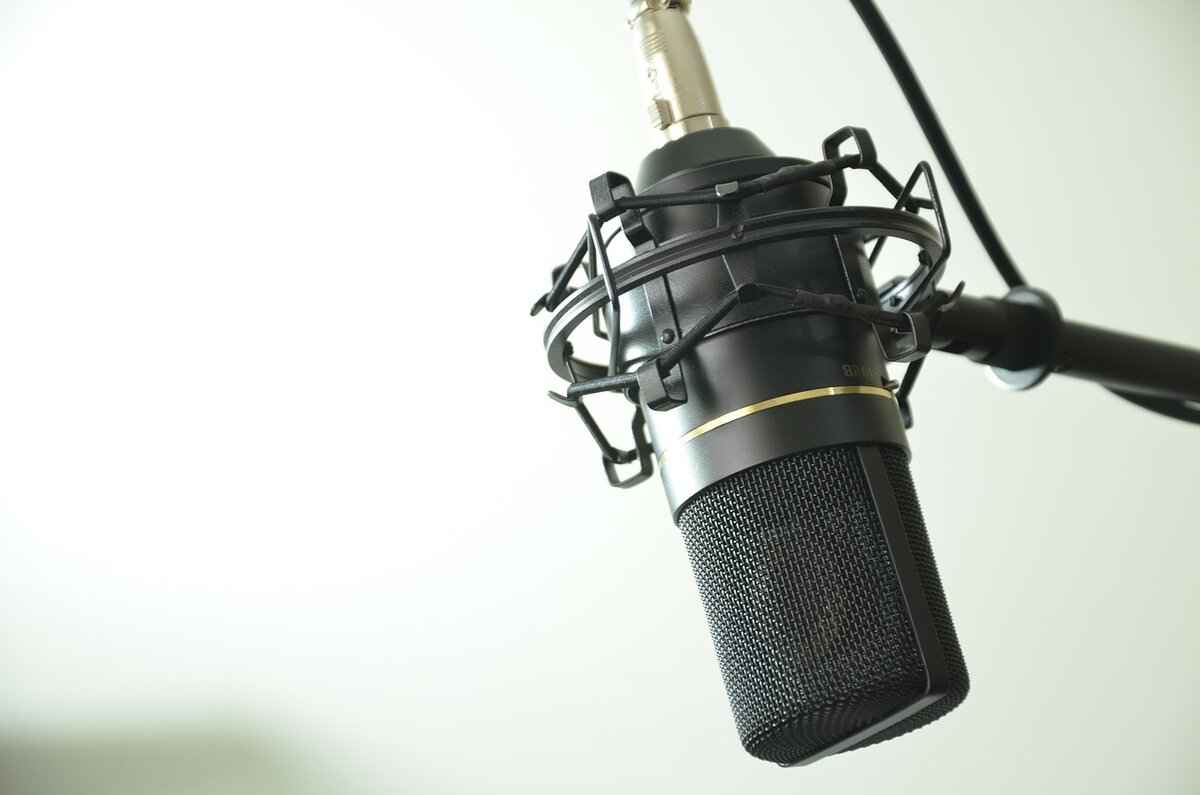
Best Lavalier Mics for Your DJI Osmo Action 4
Lavalier microphones, often referred to as lapel mics, are an essential tool for content creators using the DJI Osmo Action 4. Their compact size and discreet design make them perfect for a variety of applications, including interviews and vlogging. Unlike traditional handheld microphones, lavalier mics can be clipped onto clothing, allowing for hands-free operation and a more natural speaking posture.
One of the most significant advantages of using a lavalier mic is their ability to capture high-quality audio in challenging environments. Whether you’re conducting an interview in a bustling café or vlogging outdoors, these microphones excel in minimizing background noise while focusing on the speaker’s voice. This feature is particularly beneficial for maintaining clarity in your recordings, ensuring that your audience hears every word without distraction.
- Discreet Design: Easily clip onto clothing, making them unobtrusive.
- Excellent Sound Quality: Capture clear audio even in noisy settings.
- Versatility: Suitable for interviews, presentations, and vlogging.
- Portability: Lightweight and easy to transport for on-the-go recording.
Here are some of the best lavalier microphones that can enhance your audio recording experience:
The Rode SmartLav+ is a favorite among content creators due to its exceptional audio quality and compatibility with smartphones. This lavalier mic features an omnidirectional pickup pattern, ensuring that it captures sound from all directions. Its compact design allows for easy attachment to clothing, making it perfect for interviews and vlogs.
If you’re looking for an affordable yet reliable option, the BOYA BY-M1 is an excellent choice. This lavalier mic offers impressive sound quality for its price point and comes with a long cable, providing flexibility in positioning. It’s compatible with various devices, including cameras and smartphones, making it a versatile tool for any content creator.
The Audio-Technica ATR3350xiS is another great option for those seeking quality audio. This lavalier microphone features a low-frequency roll-off switch, which helps reduce unwanted noise, making it ideal for outdoor recording. Its lightweight design and long cable length allow for comfortable use during interviews and presentations.
Connecting a lavalier microphone to your DJI Osmo Action 4 is a straightforward process. You’ll need the appropriate adapter to ensure compatibility. Simply plug the microphone into the adapter and connect it to the camera’s microphone input. This setup allows you to capture high-quality audio seamlessly.
- Placement: Position the mic close to the speaker’s mouth for optimal sound capture.
- Windshields: Use windshields when recording outdoors to minimize wind noise.
- Test Audio Levels: Always conduct a sound check before starting your recording to ensure proper levels.
In conclusion, lavalier microphones are invaluable tools for enhancing audio quality when using the DJI Osmo Action 4. Their discreet nature and excellent sound performance make them ideal for various recording scenarios. By selecting the right lavalier mic and following best practices for use, you can significantly improve the overall quality of your video content.
Rode SmartLav+ Lavalier Microphone
The Rode SmartLav+ Lavalier Microphone has become a staple among content creators and videographers due to its exceptional audio quality and portability. This microphone is designed specifically for mobile devices, making it an excellent tool for those who need to capture high-fidelity sound while on the move.
One of the standout features of the Rode SmartLav+ is its high-quality audio capture. It employs an omnidirectional pickup pattern, which allows it to capture sound from all directions, ensuring that your voice is clear and prominent, even in noisy environments. This makes it particularly suitable for interviews, vlogging, and any situation where you want to record dialogue without the hassle of bulky equipment.
Another significant advantage of the SmartLav+ is its compatibility with mobile devices. It connects easily to smartphones and tablets via a 3.5mm TRRS connector, making it incredibly user-friendly. This feature is especially beneficial for content creators who often record on-the-go, as it eliminates the need for additional recording equipment. Simply plug it into your device, and you’re ready to start recording high-quality audio.
In addition to its ease of use, the Rode SmartLav+ is also highly portable. Its compact design allows it to fit easily in your pocket or camera bag, making it an ideal choice for travel. Whether you’re shooting a video for social media, conducting interviews, or recording podcasts, this microphone is designed to be your reliable companion.
- Durability: The SmartLav+ is built to last, with a robust construction that can withstand the rigors of daily use.
- Windshield: It comes with a foam windshield that helps reduce wind noise during outdoor recordings, ensuring clarity in your audio.
- Affordability: Compared to other lavalier microphones in its class, the SmartLav+ offers exceptional value, making it accessible for both beginners and professionals.
For those looking to enhance their audio quality without breaking the bank, the Rode SmartLav+ is a top contender. Its combination of high-quality sound, portability, and affordability makes it an ideal choice for anyone using the DJI Osmo Action 4. By investing in this microphone, you can significantly improve the overall production value of your videos, ensuring that your audience receives the best listening experience possible.
In summary, the Rode SmartLav+ Lavalier Microphone is an excellent investment for content creators who prioritize audio quality and convenience. Its user-friendly design, compatibility with mobile devices, and impressive sound capture capabilities make it a must-have tool for anyone serious about producing professional-grade audio.
BOYA BY-M1 Lavalier Microphone
The has gained recognition as a high-quality yet affordable option for both amateur and professional videographers. With its exceptional sound performance, this microphone is tailored to meet the needs of a variety of users, from vloggers to interviewers.
One of the standout features of the BOYA BY-M1 is its versatility. It comes with a 6-meter cable, allowing for significant distance between the microphone and the recording device. This is particularly beneficial for those who need to capture sound from a distance without compromising audio quality. The microphone is compatible with a wide range of devices, including smartphones, cameras, and laptops, making it a flexible choice for different recording scenarios.
In terms of audio quality, the BOYA BY-M1 excels. It features a cardioid pickup pattern, which helps to isolate the speaker’s voice while minimizing background noise. This is crucial for outdoor shoots or in busy environments where you want to ensure clarity in your recordings. The microphone also has a frequency response range of 20Hz to 20kHz, capturing a broad spectrum of sounds, which is essential for a rich audio experience.
Another remarkable aspect of the BOYA BY-M1 is its ease of use. The microphone operates on a plug-and-play basis, meaning users can connect it directly to their devices without the need for additional software or complicated setups. This user-friendly approach makes it particularly appealing for beginners who may not have extensive technical knowledge.
Additionally, the BOYA BY-M1 includes a windshield, which is a valuable accessory for outdoor recordings. This helps to reduce wind noise, ensuring that your audio remains clear even in challenging conditions. The microphone also comes with a battery that can last for up to 30 hours, providing long-lasting performance for extended recording sessions.
When considering the BOYA BY-M1, it is important to note its affordability. Priced competitively, it offers excellent value for money, especially for those just starting in video production. Its combination of quality, versatility, and ease of use makes it a top choice among users who want to enhance their audio without breaking the bank.
In conclusion, the stands out as a reliable and effective tool for anyone looking to improve their audio quality. Whether you are recording interviews, vlogs, or any other type of content, this microphone delivers impressive sound quality that meets the demands of both beginners and seasoned professionals alike.

Best Shotgun Mics for DJI Osmo Action 4
When it comes to enhancing audio quality for your DJI Osmo Action 4, selecting the right microphone is crucial. Among the various options available, shotgun microphones stand out for their ability to capture focused audio from a distance. This makes them particularly effective for outdoor shoots and dynamic environments where background noise can be a challenge. In this section, we will explore the best shotgun mics compatible with the DJI Osmo Action 4, helping you make an informed choice.
Shotgun microphones are designed with a highly directional pickup pattern. This means they can capture sound from a specific source while minimizing noise from the sides and rear. This feature is especially beneficial when filming in crowded or noisy settings. By using a shotgun mic, you can ensure that your primary audio source, whether it’s a voice or an instrument, is recorded clearly, enhancing the overall quality of your video.
- Rode VideoMic Pro+: This microphone is renowned for its advanced audio processing capabilities. With a supercardioid pickup pattern, it excels in isolating sound from the front while reducing ambient noise. It also features a built-in rechargeable battery, providing extended recording time without interruptions.
- Deity V-Mic D3 Pro: Known for its versatility, the Deity V-Mic D3 Pro offers adjustable gain settings and a unique design that allows it to adapt to various recording environments. Its high-quality audio capture makes it a favorite among videographers looking for reliable performance.
- Sennheiser MKE 600: This shotgun mic is particularly effective in capturing sound at a distance. With its low self-noise and high sensitivity, it delivers professional-grade audio quality, making it ideal for documentary filmmaking and interviews.
- Shure VP83F LensHopper: Featuring an integrated flash recorder, this mic allows for direct recording to an SD card. Its compact design and exceptional audio fidelity make it a great choice for on-the-go filmmakers.
When selecting a shotgun microphone for your DJI Osmo Action 4, consider the following factors:
- Directional Pickup Pattern: Look for a mic with a supercardioid or hypercardioid pattern to effectively isolate sound.
- Frequency Response: A wider frequency response range ensures that the mic captures a broader spectrum of sound, enhancing audio fidelity.
- Portability: Since the DJI Osmo Action 4 is designed for mobility, choose a lightweight and compact mic that won’t hinder your shooting experience.
- Power Source: Consider whether the mic requires batteries or can be powered through your camera, as this will affect your setup and shooting duration.
Connecting a shotgun microphone to your DJI Osmo Action 4 is straightforward. Ensure you have the necessary adapters, such as a 3.5mm TRS to TRRS adapter, to facilitate the connection. Once connected, adjust the audio settings on your camera to optimize recording levels.
To achieve the best results with your shotgun microphone:
- Position the mic as close to the sound source as possible to enhance clarity.
- Utilize windshields when filming outdoors to minimize wind noise.
- Monitor audio levels during recording to avoid distortion and ensure balanced sound.
By choosing the right shotgun microphone and following these tips, you can significantly improve the audio quality of your recordings with the DJI Osmo Action 4, making your projects more professional and engaging.
Rode VideoMic Pro+
The is a standout choice for content creators seeking to significantly enhance their audio quality when using the DJI Osmo Action 4. This microphone is engineered with advanced features that cater to both amateur and professional videographers, making it a versatile tool for various recording scenarios.
One of the primary reasons to opt for the is its exceptional audio processing capabilities. This microphone utilizes advanced audio processing technology that ensures your recordings capture sound with remarkable clarity. Its supercardioid pickup pattern is specifically designed to focus on sounds directly in front of the microphone while effectively minimizing unwanted ambient noise. This feature is crucial for action shots where background sounds can easily overwhelm the primary audio.
- Supercardioid Pickup Pattern: This design allows for targeted sound capture, making it ideal for interviews and dynamic environments.
- Advanced Audio Processing: The built-in processing enhances audio quality, providing a professional touch to your recordings.
- Battery Options: The VideoMic Pro+ can be powered by either a rechargeable battery or a 9V battery, offering flexibility for extended recording sessions.
- Low-Cut Filter: This feature helps eliminate low-frequency noise, such as wind or traffic sounds, ensuring cleaner audio.
- High-Pass Filter: Reduces rumble and other unwanted noises, enhancing the overall sound quality.
When used with the DJI Osmo Action 4, the excels in various settings, from bustling urban environments to serene outdoor landscapes. Its ability to isolate sound makes it particularly useful for capturing dialogue in crowded places, ensuring that the voice of the subject comes through clearly without distractions from surrounding noise.
Connecting the to your DJI Osmo Action 4 is straightforward. With the appropriate adapter, you can easily plug the microphone into the camera’s audio input. This seamless integration allows for quick setup, letting you focus on capturing the moment rather than troubleshooting your equipment.
- Placement: Position the microphone as close to the sound source as possible to maximize audio quality.
- Use Windshields: When recording outdoors, consider using a windshield to reduce wind noise, ensuring your audio remains clear.
- Monitor Levels: Regularly check audio levels during recording to avoid distortion and ensure optimal sound quality.
The is an invaluable tool for anyone looking to elevate their audio quality while using the DJI Osmo Action 4. With its advanced features, ease of use, and high-quality sound capture, this microphone is a worthy investment for both budding content creators and seasoned professionals. By incorporating this microphone into your setup, you can achieve a level of audio clarity that enhances the overall production value of your videos.
Deity V-Mic D3 Pro
The stands out in the realm of external microphones, particularly for videographers and content creators using devices like the DJI Osmo Action 4. Its reputation for versatility and exceptional audio quality makes it a go-to choice for professionals and enthusiasts alike.
One of the most notable features of the is its adjustable gain control. This functionality allows users to tailor the microphone’s sensitivity based on their recording environment. Whether you’re capturing sound in a quiet room or a bustling outdoor setting, the ability to adjust the gain ensures that your audio remains clear and balanced. This is particularly beneficial for those who often find themselves in unpredictable audio environments.
Another significant advantage of the V-Mic D3 Pro is its rechargeable battery. Unlike many traditional microphones that rely on disposable batteries, this model features a built-in battery that can be charged via USB. This not only extends recording sessions but also provides peace of mind for users who need to focus on their content without worrying about battery life. The battery life can last up to 51 hours on a single charge, making it ideal for long shoots or travel.
In terms of design, the is both lightweight and compact, which enhances its portability. It includes a shock mount that minimizes handling noise and vibrations, ensuring that your audio remains pristine, even in dynamic shooting conditions. Additionally, it comes with a windscreen, which is essential for outdoor recordings, helping to reduce wind noise and maintain audio clarity.
Compatibility is another strong point for the V-Mic D3 Pro. It features a universal 3.5mm output, making it compatible with a wide range of devices, including cameras, smartphones, and audio recorders. This versatility allows content creators to use the microphone across different platforms, making it a smart investment for anyone serious about improving their audio quality.
Moreover, users appreciate the supercardioid pickup pattern of the , which focuses on sound coming from the front while rejecting noise from the sides and rear. This directional capability is crucial for capturing clear dialogue in interviews or vlogs, making it a preferred choice for filmmakers and YouTubers aiming for professional-grade audio.
In summary, the is a robust and versatile microphone that excels in various recording scenarios. Its combination of adjustable gain, long battery life, and excellent sound quality makes it a top contender in the market. Whether you’re a seasoned professional or a budding creator, this microphone can significantly enhance your audio recordings, ensuring that your projects sound as good as they look.
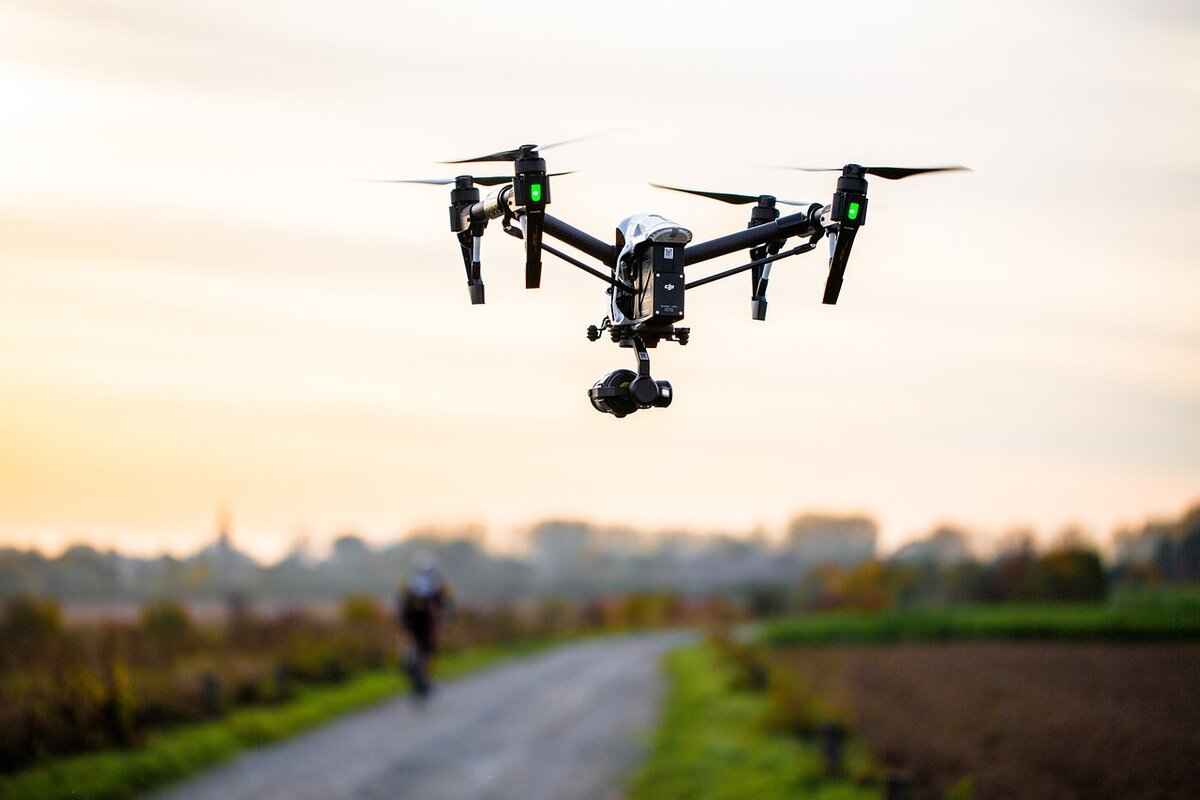
Best USB Mics for Streaming with DJI Osmo Action 4
When it comes to enhancing your audio quality for streaming and podcasting, USB microphones stand out as an excellent choice. They provide not only exceptional sound clarity but also user-friendly interfaces, making them ideal for creators using the DJI Osmo Action 4. With a variety of models available, it’s essential to select the right microphone that suits your specific needs.
Why Choose USB Microphones?
USB microphones are particularly advantageous for streamers and podcasters due to their plug-and-play functionality. You can easily connect them to your computer or recording device without the need for additional equipment. This simplicity allows for quick setup and immediate use, which is crucial during live sessions where every second counts.
Key Features of USB Microphones
- Audio Quality: Look for microphones that offer high-resolution audio, ensuring your voice is captured clearly.
- Direct Monitoring: Some models provide headphone outputs for real-time audio monitoring, helping you catch any issues on the spot.
- Pickup Patterns: Consider microphones with multiple pickup patterns (cardioid, omnidirectional, etc.) to suit different recording environments.
- Portability: Lightweight and compact designs make it easier to transport your mic for on-the-go recording.
Top USB Microphones for Streaming
Blue Yeti USB Microphone
The Blue Yeti is renowned for its versatility and high-quality audio capture. It features multiple pickup patterns, allowing users to switch between cardioid, bidirectional, omnidirectional, and stereo modes. This flexibility makes it perfect for solo streaming or interviews with multiple participants.
Audio-Technica AT2020USB+
The Audio-Technica AT2020USB+ combines the renowned sound quality of the AT2020 with the convenience of USB connectivity. It delivers studio-quality audio and is ideal for those looking to produce professional-grade content from home.
Razer Seiren X
The Razer Seiren X is designed specifically for gamers and streamers. Its compact design and supercardioid pickup pattern help isolate your voice while minimizing background noise, making it a great choice for live streaming sessions.
Elgato Wave:3
The Elgato Wave:3 microphone is another excellent option for streamers. It features a unique Clipguard technology that prevents distortion, ensuring your audio remains clear even during loud moments. Additionally, its software integration allows for seamless audio mixing during live broadcasts.
Connecting USB Microphones to DJI Osmo Action 4
To connect a USB microphone to your DJI Osmo Action 4, you will need an appropriate adapter that converts USB to the camera’s input format. This is crucial for achieving optimal audio performance during your recordings.
Optimizing Your Audio Quality
To ensure the best audio quality when using USB microphones, consider the following tips:
- Position the microphone close to your mouth to capture clear sound.
- Use pop filters or windshields to minimize unwanted noise.
- Adjust gain settings to avoid distortion and ensure balanced audio levels.
By selecting the right USB microphone and implementing these tips, you can significantly enhance your audio quality for streaming and podcasting with the DJI Osmo Action 4. The ease of use and high-quality sound capture makes USB microphones an indispensable tool for content creators.
Blue Yeti USB Microphone
The stands out as a top choice for content creators, thanks to its exceptional audio quality and versatile features. This microphone is particularly popular among podcasters, streamers, and anyone looking to capture high-fidelity sound with ease. Its unique design and functionality make it an essential tool for enhancing audio in various recording scenarios.
One of the key features of the Blue Yeti is its multiple pickup patterns. Users can switch between cardioid, omnidirectional, bidirectional, and stereo modes, allowing for tailored audio capture depending on the situation. For instance, the cardioid mode is perfect for solo recordings, capturing sound directly in front of the microphone while minimizing background noise. On the other hand, the omnidirectional setting picks up sound from all directions, making it ideal for group discussions or interviews.
The Blue Yeti is equipped with high-quality condenser capsules, which deliver rich and clear audio. This feature is particularly beneficial for voice recording, as it captures the nuances of the speaker’s tone and inflection. Additionally, the built-in headphone jack allows for real-time monitoring, ensuring that users can hear exactly what is being recorded without any delay.
Yes, the Blue Yeti is designed for both beginners and experienced users. Its plug-and-play functionality means that it can be easily connected to a computer via USB without the need for additional drivers or software. This simplicity makes it an attractive option for those who want to focus on content creation rather than technical setup.
While the Blue Yeti is somewhat larger than other portable mics, its sturdy build and adjustable stand make it suitable for various recording environments. For those who need a more compact solution, the microphone can be disassembled and transported with relative ease. However, users should consider the weight and size if they plan to travel frequently.
- Pop Filter: Helps reduce plosive sounds for clearer vocal recordings.
- Shock Mount: Minimizes vibrations and handling noise.
- Microphone Stand: Provides stability and flexibility in positioning the microphone.
When compared to other USB microphones, the Blue Yeti consistently ranks high due to its versatility and audio quality. While there are other options available, such as the Audio-Technica AT2020USB+, the Blue Yeti’s multiple pickup patterns give it a distinct advantage for varied recording situations.
In summary, the Blue Yeti USB Microphone is an excellent investment for anyone serious about audio quality. Its combination of high-quality sound, versatility in pickup patterns, and user-friendly design make it a preferred choice among podcasters, streamers, and content creators alike. Whether you’re recording in a studio or on the go, the Blue Yeti is equipped to deliver exceptional audio performance.
Audio-Technica AT2020USB+
The microphone is a remarkable tool for anyone looking to enhance their audio quality, particularly in video production and streaming. This USB microphone seamlessly combines studio-quality sound with the convenience of USB connectivity, making it an ideal choice for both amateurs and professionals alike.
One of the standout features of the is its cardioid polar pattern. This design effectively captures sound from the front while minimizing unwanted noise from the sides and rear. This characteristic is particularly beneficial in environments where background noise can be a challenge, ensuring that your voice or the primary audio source remains clear and prominent.
- High-Quality A/D Converter: The microphone features a built-in high-performance A/D converter with 16-bit, 44.1/48 kHz sampling rate, delivering exceptional audio fidelity.
- Headphone Output: The AT2020USB+ includes a headphone jack with volume control, allowing for real-time monitoring of your audio without any latency.
- Durable Construction: Built to last, this microphone features a rugged metal housing that ensures durability during transport and use.
- Easy Plug-and-Play Setup: The USB interface makes it incredibly easy to connect to your computer or compatible devices, eliminating the need for additional audio interfaces.
This microphone is suitable for a wide range of users, including:
- Podcasters: Its clear audio reproduction makes it a favorite among podcasters looking to deliver professional-sounding content.
- Content Creators: Whether you’re creating YouTube videos or live streaming, the AT2020USB+ enhances the overall audio experience.
- Musicians: Ideal for recording vocals and instruments, this mic captures the nuances of sound with impressive accuracy.
When compared to other USB microphones on the market, the holds its ground due to its superior sound quality and user-friendly features. While there are cheaper alternatives available, the performance and build quality of the AT2020USB+ justify its price point for serious users.
Setting up the AT2020USB+ is straightforward. Simply plug it into your computer’s USB port, install any necessary drivers if prompted, and you’re ready to go. For optimal results, consider using a microphone stand or boom arm to position the mic at the right distance from your mouth, ensuring clear sound capture.
- Positioning: Place the microphone about 6-12 inches from your mouth for the best balance of clarity and warmth.
- Environment: Record in a quiet space with minimal echo. Soft furnishings can help absorb sound and reduce reflections.
- Pop Filter: Using a pop filter can help eliminate plosive sounds, ensuring a smoother audio experience.
In summary, the is an excellent investment for anyone serious about improving their audio quality. With its combination of high-end features and user-friendly design, it stands out as a top choice for various recording applications.

How to Connect an External Mic to DJI Osmo Action 4?
Connecting an external microphone to your DJI Osmo Action 4 is a crucial step in enhancing your video production quality. With the right adapters and setup, you can achieve optimal audio performance that complements your stunning visuals. Below is a detailed guide on how to connect an external mic effectively.
- Microphone: Choose a compatible external microphone, such as a lavalier or shotgun mic.
- Adapter: A 3.5mm TRS to TRRS adapter is often required for most external microphones to connect to the Osmo Action 4.
- Audio Settings: Familiarize yourself with the audio settings on your camera to ensure the mic is recognized.
- Gather Your Equipment: Ensure you have your DJI Osmo Action 4, the external microphone, and any necessary adapters.
- Attach the Adapter: Plug the 3.5mm TRS end of the adapter into the microphone input on the DJI Osmo Action 4.
- Connect the Microphone: Insert the microphone’s jack into the other end of the adapter.
- Check Compatibility: Make sure the microphone is recognized by the camera. You can do this by accessing the audio settings in the camera menu.
- Perform a Test Recording: Conduct a short test recording to ensure the audio is being captured clearly.
While connecting an external microphone is generally straightforward, you may encounter some common issues:
- No Sound: Ensure that the microphone is properly connected and that the adapter is functioning.
- Low Volume: Check the microphone settings and adjust the gain levels if necessary.
- Interference or Noise: This can occur if the microphone is too close to other electronic devices. Try repositioning it.
To maximize the effectiveness of your external microphone, consider the following tips:
- Placement: Position the microphone close to the sound source to capture clear audio.
- Wind Protection: Use windshields or foam covers when recording outdoors to minimize wind noise.
- Monitor Audio Levels: Regularly check audio levels during recording to avoid distortion.
By following these steps and tips, you can significantly enhance the audio quality of your recordings with the DJI Osmo Action 4. With a little practice, connecting an external microphone can become a seamless part of your video production process.

Tips for Optimizing Audio Quality with External Mics
When it comes to enhancing the audio quality of your recordings, especially with devices like the DJI Osmo Action 4, making informed decisions about your external microphone setup is crucial. Below are some that can significantly improve your sound recordings.
Proper mic placement is essential for capturing the best audio. The distance between the microphone and the sound source can greatly influence the clarity and richness of the sound. Ideally, position the mic as close as possible to the subject without intruding on the shot. This reduces the chances of picking up unwanted background noise and enhances vocal clarity.
When recording outdoors, wind can create disruptive noise that detracts from the overall audio quality. Utilizing windshields or dead cats can help mitigate this issue by diffusing wind gusts before they reach the microphone. This is particularly important in open areas where wind is prevalent, ensuring that your audio remains clean and professional.
Adjusting the gain settings on your microphone is another critical factor in achieving optimal audio quality. Setting the gain too high can lead to distortion, while too low can result in inaudible sound. Aim for a balanced level where the audio peaks without clipping. Regularly monitor your levels during recording to make adjustments as necessary.
To minimize background noise, consider using directional microphones, such as shotgun mics. These mics are designed to capture sound from a specific direction, effectively isolating the subject’s voice. Additionally, recording in quieter environments or utilizing soundproofing techniques can further enhance audio clarity.
In more complex recording setups, using a mixer can provide greater control over sound quality. A mixer allows you to adjust levels for multiple audio sources, apply effects, and manage EQ settings in real-time, resulting in a polished final product. This is especially useful when recording interviews or multi-person discussions.
Even with the best recording techniques, some audio issues may arise. Utilizing post-production editing software can help refine your audio. Tools like noise reduction, equalization, and compression can enhance the overall sound quality, making your recordings more professional. However, it’s always best to aim for the highest quality during the recording phase to minimize the need for extensive editing.
Employing multiple microphones can also enhance audio quality. By using different types of mics for various sound sources, you can capture a wider range of frequencies and sound dynamics. For instance, combining a lavalier mic for interviews with a shotgun mic for ambient sound can create a richer audio landscape.
By following these tips, you can significantly improve the audio quality of your recordings with external microphones. Remember, achieving great sound is a combination of proper equipment, thoughtful techniques, and careful attention to detail.
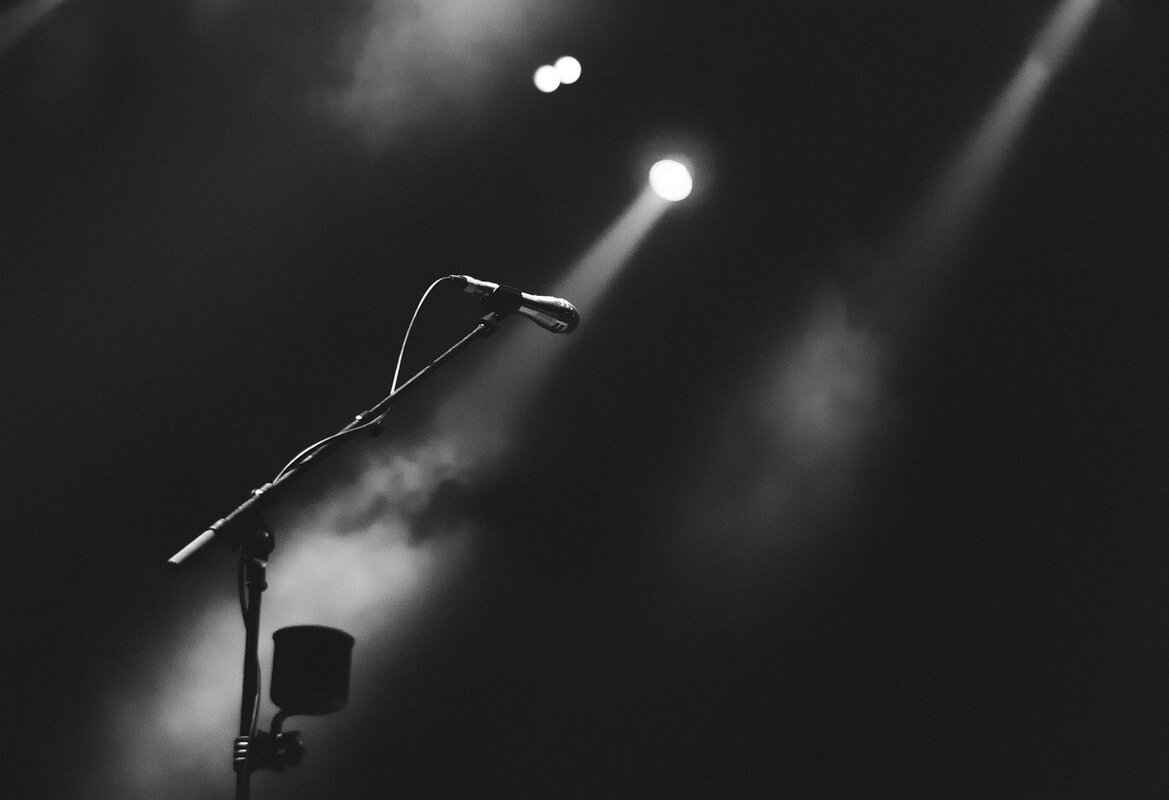
Common Mistakes When Using External Mics
When utilizing external microphones, especially with devices like the DJI Osmo Action 4, it is crucial to be aware of common mistakes that can compromise audio quality. Understanding these pitfalls can significantly enhance your recording experience and result in professional-grade sound. Here are some of the most prevalent errors to avoid:
One of the most critical aspects of achieving excellent audio quality is mic placement. Positioning the microphone too far from the sound source can lead to weak audio levels and increased background noise. Conversely, placing the mic too close may cause distortion or unwanted sounds. Always ensure that the microphone is positioned at an optimal distance, typically 6 to 12 inches from the speaker’s mouth, to capture clear and balanced audio.
Wind noise can be a significant issue when recording outdoors. Failing to use windscreens or windshields can result in recordings that are unusable due to excessive wind interference. Consider investing in a quality windscreen designed for your microphone type. This small accessory can dramatically improve the clarity of your recordings by filtering out harsh wind sounds, allowing the primary audio to shine through.
Another common mistake is not monitoring audio levels during recording. If the levels are too low, you risk introducing noise when amplifying the sound in post-production. On the other hand, levels that are too high can lead to clipping and distortion. Always use your device’s audio level meters to keep track of the input levels, aiming for a balanced range that avoids peaks and troughs.
The recording environment plays a significant role in audio quality. Many users overlook how ambient noise can affect their recordings. Whether it’s traffic, people talking, or other background sounds, these elements can detract from the main audio. To minimize these distractions, choose quiet locations for recording, or use directional microphones that focus on sound from a specific direction, thus reducing unwanted noise.
Another frequent oversight is skipping the equipment testing phase. Not testing microphones before a shoot can lead to unexpected issues, such as faulty connections or low battery levels. Always conduct a test recording to check for clarity, levels, and any potential interference. This simple step can save you from frustrating surprises during important shoots.
Using the wrong accessories can hinder your recording quality. For example, not using a proper shock mount can result in unwanted vibrations and handling noise. Always ensure you have the necessary accessories, such as shock mounts, pop filters, and cables, suited for your microphone and recording needs.
Finally, neglecting battery life is a common mistake that can cut recordings short. Always check the battery levels of your external microphone before starting a recording session. If your microphone uses replaceable batteries, carry spares to avoid interruptions. For rechargeable models, ensure they are fully charged prior to use.
By avoiding these common pitfalls, you can significantly enhance the quality of your audio recordings with external microphones. Taking the time to properly set up your equipment and being mindful of your recording environment will result in clearer, more professional sound.
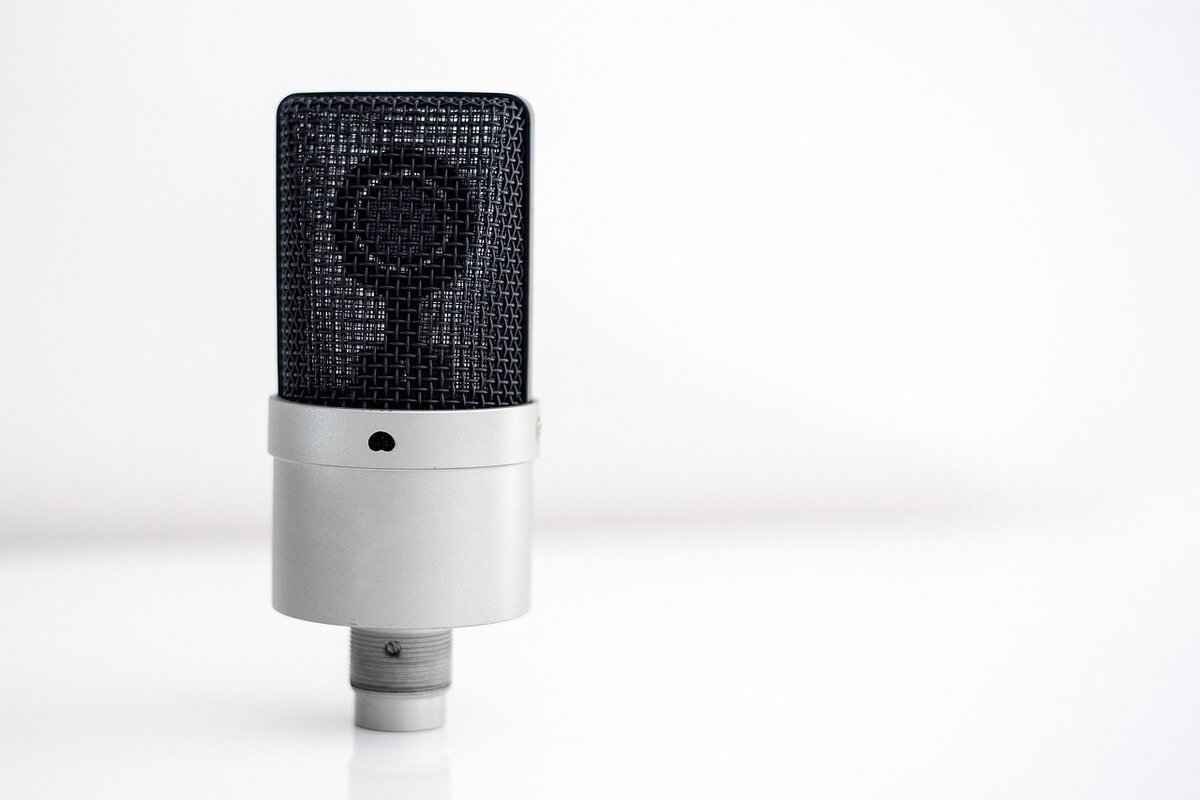
Maintaining Your External Microphone
Maintaining your external microphone is crucial for ensuring its longevity and consistent audio performance. Regular upkeep not only prolongs the lifespan of your device but also enhances the quality of your recordings. Here are some essential practices to follow:
Dust, moisture, and debris can accumulate on your microphone, affecting its performance. Regular cleaning helps to maintain sound clarity and prevent any potential damage. Use a soft, dry cloth to gently wipe the microphone body and a brush to clean the grille. Avoid using harsh chemicals that could harm the microphone’s components.
Storage plays a vital role in maintaining your microphone’s condition. Always store your microphone in a protective case when not in use. This protects it from physical damage and environmental factors. If possible, keep it in a cool, dry place to prevent moisture buildup, which can lead to corrosion.
- Avoid Extreme Temperatures: Keep your microphone away from hot or cold environments that could damage sensitive components.
- Use Windscreens: When recording outdoors, use a windshield to protect against wind noise and moisture.
- Handle with Care: Always hold the microphone by its body rather than the grille to avoid damaging the internal components.
It is advisable to clean your microphone after each use, especially if it has been exposed to sweat or moisture. For less frequent use, a thorough cleaning every month is recommended. Regular checks for any signs of wear or damage can help catch issues early.
If you notice a decline in audio quality, it may be time for a more thorough inspection. Check for:
- Loose Connections: Ensure that all cables and connectors are secure.
- Battery Issues: If your microphone is powered by batteries, make sure they are fresh and properly installed.
- Physical Damage: Inspect for any visible signs of wear or damage that may require professional repair.
By following these maintenance tips, you can ensure that your external microphone remains in optimal condition, delivering high-quality audio for all your recording needs. Proper care not only enhances performance but also extends the life of your investment, allowing you to focus on capturing great sound without worry.
Frequently Asked Questions
- What is the benefit of using an external mic with the DJI Osmo Action 4?
Using an external microphone significantly enhances your audio quality. It captures clearer sound and reduces background noise, making your videos sound more professional and engaging. Think of it as upgrading from a basic speaker to a high-end sound system!
- How do I connect an external microphone to my DJI Osmo Action 4?
Connecting an external mic is pretty straightforward! You’ll need the right adapters to fit your mic into the Osmo Action 4. Once you have those, just plug it in, and you’re ready to roll! Always double-check your settings to ensure optimal performance.
- What types of external mics work best with the DJI Osmo Action 4?
It really depends on what you’re filming! Lavalier mics are great for interviews, shotgun mics excel in outdoor settings for focused audio, and USB mics are perfect for streaming. Choose based on your needs and the environment you’ll be recording in!
- How can I optimize audio quality when using an external mic?
To get the best sound, pay attention to mic placement, use windshields for outdoor recording, and adjust your gain settings. It’s all about minimizing interference and capturing the clearest sound possible!
- What are common mistakes to avoid when using external mics?
Avoid improper mic placement, neglecting wind noise reduction, and overlooking audio levels. These simple mistakes can drastically affect your recording quality, so keep an eye on them!













